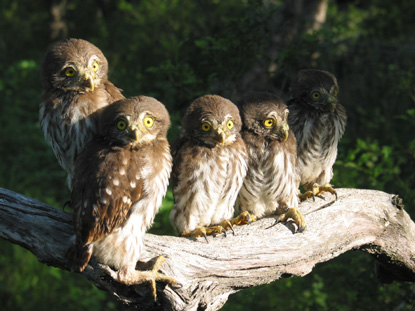The Center for Biological Diversity filed suit against the U.S. Fish and Wildlife Service for failing to finalize Endangered Species Act protections for the cactus ferruginous pygmy owl, which survives in low numbers in southern Arizona, Texas and portions of Mexico.
The pygmy owl was proposed for protection in December 2022, triggering a one-year deadline for finalizing protections, which has yet to occur.
“These fearsome little owls and many other species have waited too long for lifesaving protection,” said Noah Greenwald, endangered species director at the Center. “The Fish and Wildlife Service’s program for protecting species is badly broken and the administration is doing nothing to fix it. The Endangered Species Act is our best tool for addressing the extinction crisis, but it only works if we actually use it.”

The Biden administration has consistently missed the Act’s deadlines, which were established to ensure imperiled plants and animals receive timely protections. Overall, the administration has protected just 11 species per year compared to 65 species a year under the Clinton administration and 36 species each year under the Obama administration.
Pygmy owls are immediately threatened by urbanization, agriculture, climate change-driven drought and the rapid spread of invasive buffelgrass, which spreads fire that kills the columnar cactuses and other desert vegetation that pygmy owls need to survive.
“The Sonoran Desert is unravelling before our eyes. If we don’t act fast the pygmy owls and the saguaro cactuses they call home will be gone,” said Greenwald. “Saving this little owl means saving the desert ecosystems we all love.”
In addition to the pygmy owl, today’s lawsuit includes 12 other species unduly waiting for protection: the Mt. Rainier white-tailed ptarmigan, Peñasco least chipmunk, the Humboldt marten, tall western penstemon, six Texas mussels (Texas fatmucket, Guadalupe fatmucket, Texas fawnsfoot, Texas pimpleback, Guadalupe orb and false spike), pyramid pigtoe mussel and four distinct populations of the foothill yellow-legged frog.
Background
Cactus ferruginous pygmy owls are generally less than 7 inches long, weigh less than 2.6 ounces and are reddish brown overall with a cream colored and streaked belly. They have two dark brown or black spots on the back of their head, giving the appearance of eyes. They are secondary-cavity nesters, meaning they use cavities excavated by woodpeckers and other species in saguaro cactuses and trees. They prey on a variety of insects, lizards and small mammals. Like other pygmy owls, the cactus ferruginous pygmy owl emits a series of toots when establishing a territory or calling to mates.
Following a 1992 petition from the Center, pygmy owls were protected under the Act in Arizona from 1997-2006. They lost this protection after developers sued the Service. The Center has been fighting ever since to regain protection for the imperiled little owls.
Read more national and Arizona press releases here.






